Trans.mutations(s)
For his first solo exhibition at the Valérie Delaunay Gallery, Haythem Zakaria presents a series of works based on sacred texts that he transforms and transcodes according to a set of rules defined prior to their production. Thus freed from any personal decision, the artist becomes the faithful and regular interpreter of the texts, unfolding their multiple possibilities of enunciation. This regulated production mechanism allows him to generate works whose fineness of execution, precision, and neutrality are reminiscent of industrial drawing.
The drawings from the series « Poétique de l’Éther II » thus take as their starting point the figure of the magic square, linked to a talismanic use of the Coran. Haythem Zakaria joins here a tradition of scholarly literature where « the sacred text is not implemented in its raw state, but subjected to a work of transformation which affects the form and the meaning, according to the procedures used in magic techniques » 1. This magic square is based on a combinatory principle of the letters that make up the divine name. The Muslim tradition has given a decisive status to the written word by considering it as the vehicle of an original language considered divine. Thus “Qur’an”, the Coran, is a word that can be translated as « reading », or « recitation », perhaps also « the call »…
Tryptic #3 // the footsteps of the exhibition « Les Immatériaux », created in 1983 by Jean- François Lyotard and commissioned by the Pompidou Centre, it is on the primary idea of a structural convergence between theological and digital systems that Haythem Zakaria works, as an alternative to the modern narrative of an emancipation exclusively based on the dynamics of work, will, and value. By putting forward the notion of « passibility », Jean-François Lyotard thinks of another way of inscribing himself in the paradigm of language where the latter is no longer considered as a tool of knowledge and mastery over the world, but « thought of in the manner of a field of perception, capable of ‘making sense’ by itself, independently of any intention to signify ».In the manner of poetry, the occultation of the rules that underlie the harmony of Haythem Zakaria’s works suspends questions of signification in order to clear a path towards reception, the understanding of a « continuous speaking environment » 3. He makes himself the handler by producing drawings whose economy is that of a surface where comes to be inscribed a hidden memory and that a logic of protocol and of series allows to resume and to unfold in a time which is that of meditation.
The dynamics of transcoding, repetition, and sequencing that organise the compositions of his works redistribute themselves from one series to another and contain a strong performative charge.Their intensive energy goes beyond the sole semiotic approach; it links meaning to materiality, the world of signs to the world of bodies. It can thus be approached as a space of study and freedom, the unceasingly reiterated, always deepened research of a manifestation of presence silently but rigorously contesting the expropriation of the productive activity and the alienation of the language on which the capitalist system rests.
Marguerite Pilven
Art critic and exhibition curator, member of AICA














